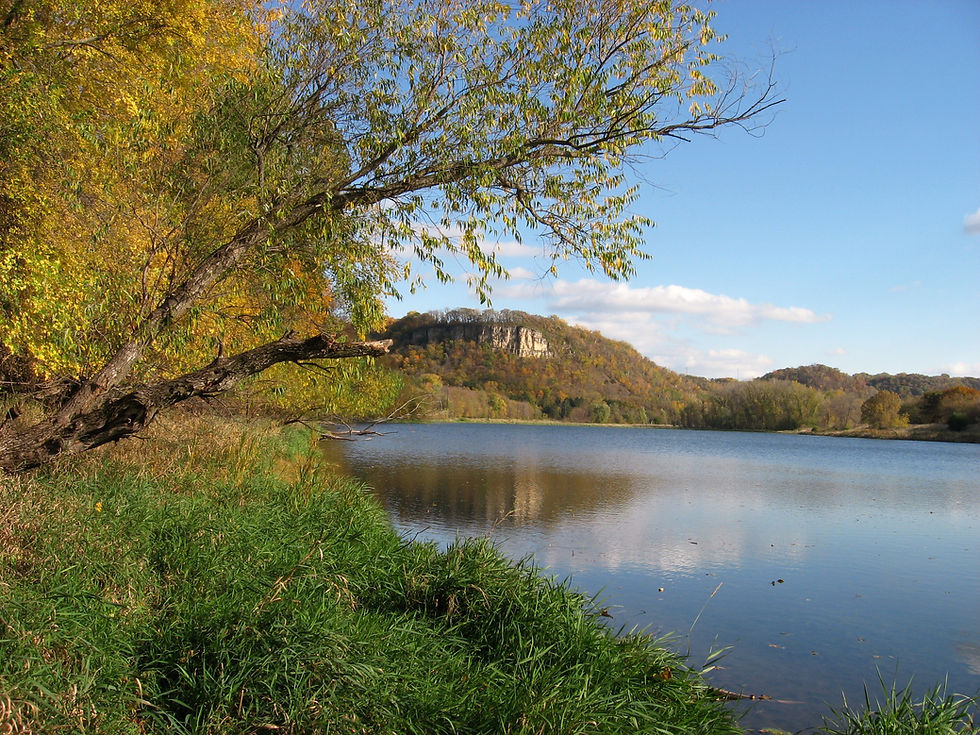Points of Interest on Wacouta Bay
- Bruce Ause
- Sep 26, 2018
- 2 min read

Wacouta Bay Sedges
In recent months, the Lake Pepin Legacy Alliance has put forth a considerable amount of effort in trying to educate the public on the need to improve the ecological integrity of Wacouta bay. Currently the biological diversity of this bay is being compromised by sedimentation and the re-suspension of those sediments from wave action.
For the health of the bay to improve, a variety of aquatic vegetation needs to be encouraged. As this photo demonstrates, sedges are the only emergent vegetation to be found. These aquatic plants provide little if any food for waterfowl and other wildlife. For this to improve, plants such as arrowhead, wild celery, wild rice and cattails must be present. One way to improve water clarity and make this happen is to construct islands to minimize the effects of wave action.

Smartweed
As I paddled my canoe around the bay, I encountered a few isolated clusters of smartweed growing. Smartweed seeds are heavily consumed by ducks, small birds and small mammals. Submerged sections of this plant provide habitats for micro and macro invertebrates. These invertebrates in turn are eaten by fish, amphibians, reptiles and even waterfowl. Unfortunately, these patches of smartweed are few and far between.

Water Parsnip
Another interesting plant I encountered on my morning paddle was water parsnip. It commonly grows in wet marshes along the shore and has sometimes been known to poison cattle.

Bur-Marigold
A final colorful wetland flower observed this morning was bur-marigold. The flat elongated fruits of this flower end in 2 to 4 barb awns which stick tightly to clothing and fur, hence the name "stick-tights."

Cardinal Flower
In the damp soil underneath the silver maple and cottonwood trees of the floodplain forest adjacent to the bay, I discovered numerous brilliantly colored cardinal flowers. These perennial woodland wildflowers thrive in shady conditions.

White Pelican Preening
Around the end of August as the river levels were at the 3 foot stage, migrating white pelicans began to appear on the bay. Unfortunately with recent heavy rains, the river has risen significantly creating challenges for the feeding pelicans.

Snapping Turtle Hatchling
From the end of August to the early part of September is when one expects to find hatchling turtles after a two to three month incubation period within sun warmed sandy soil. This 1 inch diameter sized snapper was heading to the river.

Sulfur Shelf Mushroom
A very colorful floodplain forest specimen I encountered near the end of my canoe outing was a sulfur shelf mushroom. This edible and highly sought after mushroom is sometimes called "Chicken of the Woods."

Monarch and New England Aster
The weekend of September 15 and 16 was the peak of this fall's monarch migration in our area. Early in the morning of the 15th, I took this photo near our home along the bike trail. The monarch was one of ten feeding on the nectar of this New England aster. Later that weekend, we received an email from Diane Mueller our resident monarch expert in Wacouta informing us that she counted close to 100 monarchs in her yard at one time!

Photo Credit: Diane Mueller




Comments